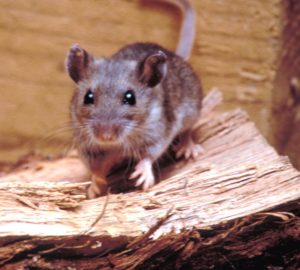 Excellent hearings, vision, smell and touch have enabled the house mouse to be highly adaptable to homes and indoor buildings. All they need is a 1/4″ opening to be able to enter a house, so they often have access to many places along the house’s perimeter.
Excellent hearings, vision, smell and touch have enabled the house mouse to be highly adaptable to homes and indoor buildings. All they need is a 1/4″ opening to be able to enter a house, so they often have access to many places along the house’s perimeter.
The house mouse is a rodent, characteristically having a pointed snout, small rounded ears, and a long naked or almost hairless tail.
House mouse is native to northern Indian subcontinent but is introduced worldwide through association with humans. Highly adaptive, the house mouse has both behavioral and physiological traits such as the ability to survive in buildings and aboard ships, a tendency to move into agricultural fields and leave when the habitat changes, and a rapid rate of reproduction that allow it to thrive wherever humans do. A female mouse can have as many as 12 babies every three weeks, quickly turning a small infestation into a huge problem. This means she could have as many as 150 offspring in a single year!
Mice are generally afraid of rats which often kill and eat them, a behavior known as muricide and it’s the reason why it’s highly unlikely for you to have both species infesting your property. Despite this, free-living populations of rats and mice do exist together.
Mice are mostly crepuscular or nocturnal; they are averse to bright lights and hence most of their feeding occurs after sunset or before sunrise. Nervously active, they are agile climbers and jumpers and are also good swimmers. Their all other senses are extremely sharp. For example, mice can use their whiskers to sense surfaces and air movements, which is why they manage to escape a room as soon as they notice you approaching.
Mice can transport bacteria, such as salmonella, on their bodies and contaminate food sources and kitchen surfaces. Apart from this, they are also responsible for Hantavirus, Leptospirosis, Typhus, Plague, Pox (Rickettsial), etc. Mice can actually carry as many as 200 human pathogens!
Mice eat 15 to 20 times per day. That’s why their nests are located close to food supplies and they have developed a preference to live within human habitats. They can live without water source since the greater amount of food provides them with enough water.
Mice chew through wallboard, cardboard, wood, and even electrical wiring. Mice gnaw at, tunnel through, and nest in insulation. House mice living outdoors eat insects and seeds, including grains, which makes them pests in some areas.
The nuisance for same is reported as:
Delaware Waffle House Shut Down After Mouse Video Surfaces
By David Chang │NBC News │June 6, 2018
A Delaware Waffle House was closed down after video surfaced of a mouse inside the restaurant.
The viral video showed a mouse eating crumbs below a counter at the Waffle House in Smyrna. The Division of Public Health Office of Food Protection (OFP) received two complaints Tuesday about mice being spotted at the restaurant. OFP inspectors arrived the same day and found evidence of a rodent infestation.
The inspectors then closed the restaurant due to gross unsanitary conditions.
The traditionally used rodenticides and pesticides used to kill the mice don’t work on them. Studies say that newly developed DNA protects the vermin from standard toxins. Mice have been slowly evolving traits to survive warfarin, and pockets of resistant rodents have been found in many different parts of the world.
One such study is mentioned below:
City mice carry disease-causing bacteria with drug-resistant genes
Mice in your living space pose potential health risks, study says
Amina Zafar │CBC News │April 17, 2018
 House mice aren’t just a nuisance but a potential source of infections, say researchers who trapped and tested more than 400 of the rodents from apartments across New York City.
House mice aren’t just a nuisance but a potential source of infections, say researchers who trapped and tested more than 400 of the rodents from apartments across New York City.
City dwellers tend to fear rats more than mice because they’re bigger and can be seen scurrying in subways or in alleys. The researchers previously studied how rats carry disease-causing bacteria such as E. coli, salmonella and C. difficile.
But they were concerned mice might actually pose a greater health risk because they live with us in houses and apartments.
“We found a lot of antibiotic resistance in some of these bacteria, which we think may have implications for understanding not only the ubiquity of antibiotic-resistant bacteria in the environment but also potential sources of human infection,” said Lipkin, whose research was published Tuesday in the journal mBio.
In the vicious cycle of resistance, antibiotics kill some bacteria, but some of the fast-growing microbes evolve and find ways to protect themselves against the drugs. When that happens, people can develop infections that are much harder to treat.
Several ineffective measures are used to stop the menace caused by the pests. Mechanical traps are widely used but they stop working once an error occurs. Use of ineffective rat baits and tapes is common. But the essentials used to make these products give ineffective results. Capsaicin is commonly used so as to prevent the damage. The pain receptors of the pests by now have got immune to the capsaicin.
The ultrasonic repeller is used these days. It is a device which emits a frequency that is unattractive to the rodent’s ear. They serve to annoy the rodent more than anything. But it is proved to be ineffective.
What can be an effective solution to the nuisance caused by these mice?
The solution available with C Tech Corporation to this nuisance is a onetime solution and the need of the hour for maintaining an ecological balance considering the significance of these rodents. Our products are a blend of green chemistry and smart technology.
Our product Combirepel™ is an extremely low toxic, non-hazardous rodent aversive. This product acts through a series of highly developed intricate mechanism ensuring that rodents are kept away from the target application. Our eco-friendly products do not kill the target species but only repel them. The product is compliant with ROHS, ROHS2, ISO, REACH, APVMA, NEA, BPR, and FIFRA exempted.
The product triggers a fear response in rodents thus protecting the application. It causes severe temporary distress to the mucous membrane of the rodents due to which the pest stays away from the application. The product triggers an unpleasant reaction in case if the pest tries to gnaw away the application. After encountering the above-mentioned emotions, the animal instinctively perceives it with something it should stay away from and stores this information for future reference. The fact that certain rodents are repelled is mimicked by other rodents as well. Thus, the other rodents too stay away from the applications. The unpleasant experience is imprinted within the animal’s memory and passed on to its progeny.
The products are available in the form of a solid masterbatch, liquid concentrate, and lacquer.
The product available in the form of solid masterbatch can be incorporated into the polymeric applications like wires and cables, pipes, polymeric tree guards, etc. Thus, making the end application rodent resistant.
The product available in liquid concentrate can be diluted in paints and can be applied over the entire area of pest infestation by paints. The liquid concentrate is compatible with all kinds of paints and solvents.
The already installed cables, pipes, and other application can be coated with our lacquer to protect them from the pests gnawing on this application and thus preventing the damage. The lacquer is transparent product and it does not wear off easily.
By using our products, you can get an effective and long-lasting solution against pest nuisance.
You could thus contribute to us in using products which are eco-friendly thus causing no damage to the environment.
Contact us at technical.marketing@ctechcorporation.com if you’re facing problems with rodents and get best remedies to combat the pest menace.
Also, visit our websites:
1] http://www.ctechcorporation.com/
2] http://www.rodrepel.com/
3] http://www.termirepel.com/
4] http://www.combirepel.com/
Follow our Facebook pages at:
1] https://www.facebook.com/Combirepel-411710912249274/
2] https://www.facebook.com/Termirepel-104225413091251/
3] https://www.facebook.com/Rodrepel-120734974768048/
Follow us on our Twitter pages at:
1] https://twitter.com/rodrepel
2] https://twitter.com/termirepel
3] https://twitter.com/combirepel

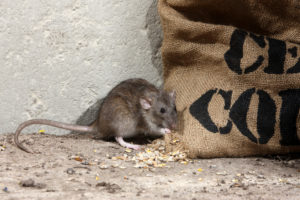 A country where starvation deaths and undernourished children fail to wake up the government from a deep slumber, a minute wastage of foodgrain is a crime. However, the awful condition in which the warehouses are maintained is a sign of why there is a massive wastage of foodgrain in the country.
A country where starvation deaths and undernourished children fail to wake up the government from a deep slumber, a minute wastage of foodgrain is a crime. However, the awful condition in which the warehouses are maintained is a sign of why there is a massive wastage of foodgrain in the country.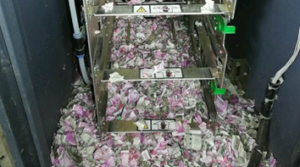
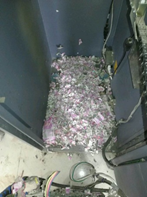
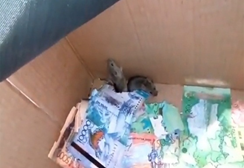 A pair of mice snuck into an ATM in the Kazakh capital Astana, hiding from a snow storm. Bank workers were surprised when they discovered the tiny intruders and the ruined notes they had munched on during their stay.
A pair of mice snuck into an ATM in the Kazakh capital Astana, hiding from a snow storm. Bank workers were surprised when they discovered the tiny intruders and the ruined notes they had munched on during their stay.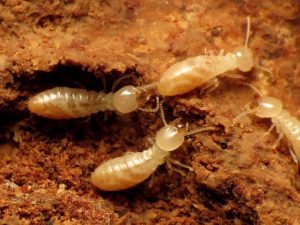

 Have you recently found shavings of wood, clothes going torn, cables losing their insulation or holes in your walls at home?
Have you recently found shavings of wood, clothes going torn, cables losing their insulation or holes in your walls at home?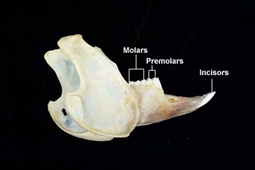 Most species have up to 22 teeth with no canines or anterior
Most species have up to 22 teeth with no canines or anterior 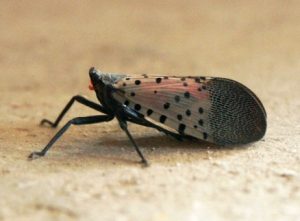

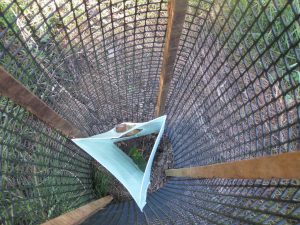

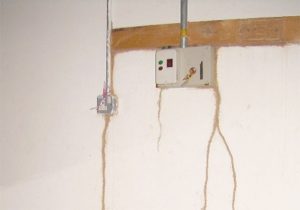
 There’s this rodent who is overtaking the wetlands. It’s just not dwelling in the wetlands but by its burrowing habits is causing a huge menace!
There’s this rodent who is overtaking the wetlands. It’s just not dwelling in the wetlands but by its burrowing habits is causing a huge menace!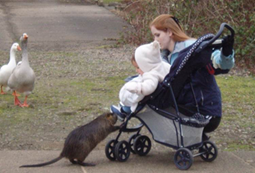 Nutria has long incisors that are yellow to orange or orange to red in color.
Nutria has long incisors that are yellow to orange or orange to red in color.